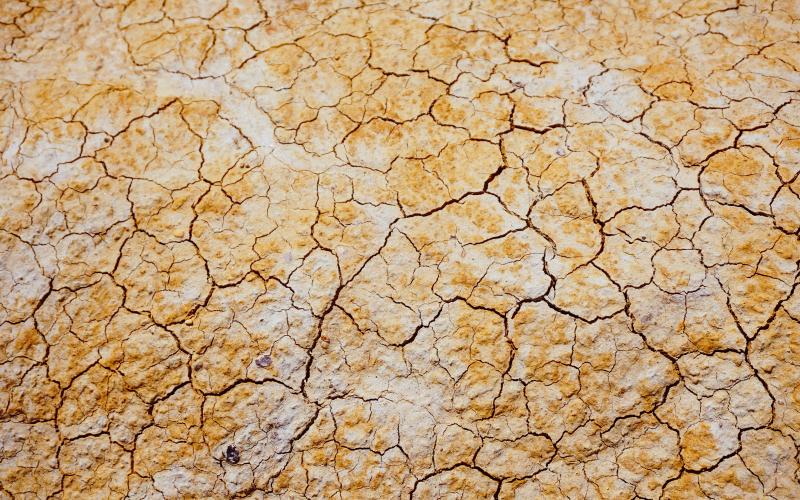California: The drought was worse than we thought.

California: The drought was worse than we thought.
During the 2012-2014 drought, farmers had difficulty maintaining their crops and their livelihoods. New research found that during this drought, water use and dependency actually increased in the Central Valley. This finding gives us pause and a chance to reevaluate our water management practices.
Marston, L., and M. Konar (2017), Drought impacts to water footprints and virtual water transfers of the Central Valley of California, Water Resource. Res., 53, 5756–5773, doi:10.1002/2016WR020251.
California is more than its cliff-lined beaches, movie stars and bustling cities – it has vast expanses of fields, full of strawberries, almonds, artichokes and other crops that depend on reliable rainfall. We in-turn depend on these crops as they supply supermarkets across the US and abroad. Between 2012 and 2014 a massive drought descended over the state and upended the food production system. The drought caused fires to spread rapidly and water shortages crippled cities and industry. The agricultural industry lost $2.2 billion in 2014 from decreased crop yield. The government regulated limits on surface water withdrawals.
How much water was actually saved from drought management practices ? Not as much as state managers thought. Landon Marston and Megan Konar researched agricultural water use during the 2012-2014 drought. They published their results in Water Resources Research. The researchers focused on water use by the industry in California’s Central Valley. Water use during the drought increased for two reasons – (1) crops need more water when it is hot and dry and (2) farmers relied on groundwater to water their crops .
Groundwater sources are natural reservoirs that sits below the earth’s surface. Where groundwater is accessible, farmers can use this resource to irrigate their crops. This water is not easily quantifiable or manageable. While farmers in California had to reduce water withdrawals from rivers, ditches and streams, during the 2012-14 drought, they supplemented these losses by increasing their use of groundwater. In the Central Valley, farmers increased their groundwater use during the drought by 30%. The increase in groundwater withdrawal caused an unsustainable aquifer depletion because more water was leaving the aquifer than being replenished. In the future, this depletion can limit California’s water resources.
Crops require more water in drought conditions than in wet conditions. Plants need more water on hot days to facilitate their growth. Roots assimilate water that is then used to drive processes of photosynthesis and subsequent plant growth. Farmers actually shifted to more water-intensive crops during the drought like vine and orchard fruits. The change in temperature and humidity and the change in crops meant that crops required 1.4 times more water during the drought.
The change in crop water requirements, and the change in crops meant that our reliance on California’s water actually increased during the drought. Although rainwater and surface water use decreased, the increase in groundwater use more than made up for this loss. This result is surprising since the shipping and trading rates from California to national and global markets decreased during the drought. However, even though the amount of goods being shipped decreased, the amount of water per grape, avocado and orange increased. So the same amount of produce “costs” more water per unit during a drought. This gives the produce a larger water footprint which, just like a carbon footprint, allows us to access the water used to create a good.
This information has important policy and management implications. First, groundwater enabled farmers to successfully adapt to the drought. Groundwater resources means that consumers around the country and the world were able to keep consuming goods from the Central Valley. This highlights how our global food system is interconnected. Second, local water management needs to conserve groundwater there is enough during the next drought. This could be achieved by requiring times of low use for aquifers so they can fill with water during non-drought times. It is also important to introduce groundwater laws and policies, as well as to price water in a way that accurately represents local scarcity.
When we take water out of one place we are affecting the entire system from rainfall to groundwater to commodity shipment. As growth and drought are both long-term development issues for the Western United States, understanding the global and local cycles of water is increasingly important. A reliable supply of water is necessary to sustain life. Adopting more sustainable water management practices and learning how to better conserve our most precious resource, water, will benefit us in the future.
